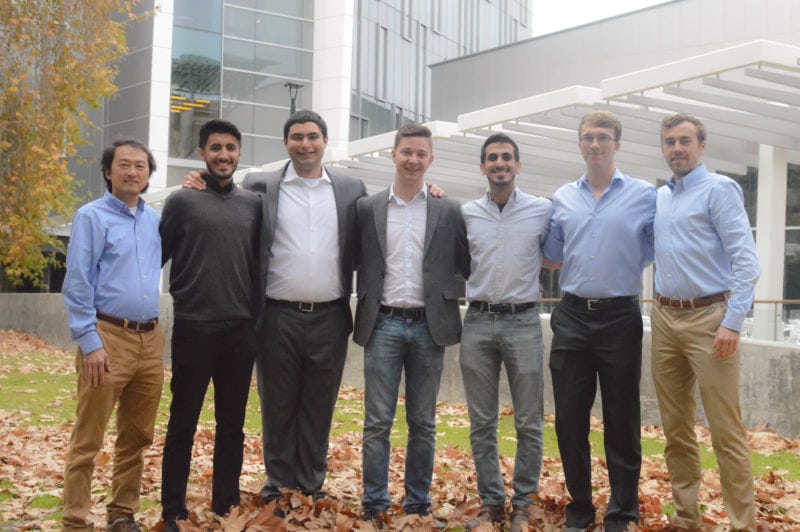Latest News

The Voyager Space Technologies team.
Emerging aerospace company Voyager Space Technologies hopes to pioneer a new approach to automated spacecraft design that lowers the barriers of entry to space for future generations. The company’s intelligent software solution SatBuilder aims to allow spacecraft engineers to accurately and efficiently develop satellites over a cloud network system that handles mission design, reliability requirements, and compliance with software, electrical and mechanical standards. Voyager Space Technologies Director of Government Affairs Colby Tunick competed and was named a group winner in the Startup Space 2018 entrepreneur pitch contest. Tunick spoke with Via Satellite about his company’s mission to drastically streamline a design process that has been left virtually unchanged since the inception of space travel.
This interview is part of our series of chats with leaders of new, up and coming aerospace start-ups as we lead up to the Startup Space 2019 contest.
Via Satellite: What inspired the launch of Voyager? What makes your offering unique? What previously missing need does the company fulfill?
Tunick: Launching a satellite can take 3-5 years, with the first 1-2 years of the process spent on just designing the spacecraft. As space becomes easier and more affordable to access, the space industry is seeing a boom in the number of planned constellations and on-orbit robotic services driven by the push for satellites in low earth orbit. However, even with the number of commercial off-the-shelf component manufacturers increasing, and launch cost decreasing, designing a spacecraft is still a very time and resource intensive process.
Spacecraft design requires many engineering iterations to settle on a configuration which meets the mission’s budgets and requirements. Throughout this process, engineers must go through the arduous process of working with a multitude of vendors, comparing mission requirements to component outputs, and communicating any changes in requirements/ mission analysis to stakeholders and other engineers; there is no centralized place for this engineering to happen. This is often the most frustrating part of an engineer’s daily job, and ultimately impedes these companies from launching their product.
Voyager has created SatBuilder, a cloud-based software platform, to solve these critical pain points by integrating an intelligent component database with multiple engineer’s analyses. SatBuilder allows large teams of satellite engineers to easily communicate real-time design decisions as they update their mission requirements and watch as their work propagates through an entire team’s mission analysis. Furthermore, our product gives engineers the ability to immediately communicate changes in their design to both management and their customers, ensuring that stakeholders are kept apprised of progress throughout the development pipeline.
Our platform provides a step-change in how engineering teams currently work together because with SatBuilder, engineers can run all their project analysis in one place. Our software enables these large teams to utilize multiple languages and scripts (i.e. MATLAB and Python etc.,) allowing for near seamless integration of the workflow. Rather than running analysis as an individual, and then trying to explain what has changed as a result, engineers are given immediate contextual awareness to see how their changing mission parameters affect the mission’s bottom line (i.e. how changes in the uplink and downlink rates can affect which solar panels are chosen, and how this might determine the satellite’s orbit).
Via Satellite: How was the company started? Who was involved with the launch?
Tunick: The creation of Voyager Space Technologies was a life-long dream for the company’s CEO and Co-Founder Darren Charrier. Charrier met his CTO and Co-Founder Faris Hamdi at the University of California San Diego. They became friends when they held leadership positions at their university’s chapter of the Students for Development and Exploration of Space. This friendship led to the founding of Voyager in May 2017. Since its inception, Voyager has grown to a ten-person strong team. The other members of the team are Harley Norton (Mission Design,) Pavan Purewal, James Smith, Kellie Higa, and Alexander Pearson-Goulart (Software Engineering Team,) Luke Liam (VP of Business Development,) and Colby Tunick (Business Development and Government Affairs). The well-rounded team leverages collective experience from SpaceX, Moon Express, Space Systems Loral and JP Morgan.
Via Satellite: Describe your major accomplishments since launch. What gives you confidence that Voyager will succeed and thrive in the market?
Tunick: Voyager recently soft released our SatBuilder Alpha to our tester community. Our testing community (whom serve in their private capacity) is a cross-section of the aerospace industry, representing the world’s largest public and private satellite manufacturers. This international group of experts helps drive SatBuilder’s features and provide critical feedback on usability in prime aerospace organizations. Voyager recently closed a pre-seed funding round which will power development for the near future.
Voyager will be successful because we are addressing a critical pain point across the aerospace industry: managing constantly changing component requirements and mission budgets for complex systems amongst large teams. By increasing efficiency and minimizing obstacles for adoption, Voyager is poised to make space more accessible.
Get the latest Via Satellite news!
Subscribe Now